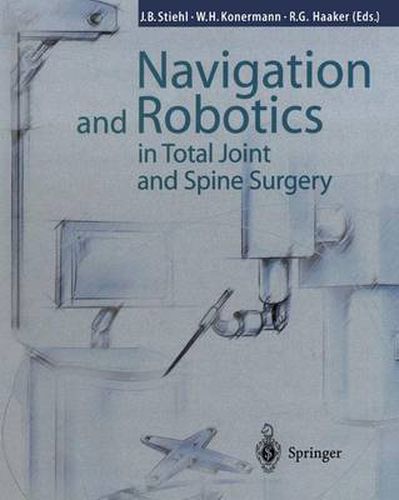Readings Newsletter
Become a Readings Member to make your shopping experience even easier.
Sign in or sign up for free!
You’re not far away from qualifying for FREE standard shipping within Australia
You’ve qualified for FREE standard shipping within Australia
The cart is loading…






Orthopaedic surgery is urr c ently just a few moments past the sunrise of computer implementation for the per- formance of surgery itself. OUT pe s cialty has always seemed to have a nearly unique. over arching characteristic -it deals almost exclusively with alteration, typically rebuilding or reconstituting. structure. What we do has more of a structural impact than a physiologic one, even when compared to the structural alterations introduced by vascular and cardiac surgery_ This structural reconstitution contrasts strongly with the largely excisional haracteri c stic of most other ur sgical fields. The relevance of Ihis feature is thai OUf specialty, as much as any, and more than most, needs precision of cuning, alignment, and replacemenl.As we contrast the rudimentary tools, we use in our operating rooms with the sophis- ticated robotic, computerized, and more extensively mechanized equipment of industry, we seem very far behind. We are almost ancient considering the pace of development and change over the last fifty years. Many question the need, practicality, expense and therefore ultimate acceptance of these methods into ortho- paedics. However, the quality I mention above, leads me to believe that eventually, hi-tech involving computer assis- tance and including robotic tools, will almost take over. The current era is and will be appreciated as a beginning- a time when new equipment and techniques are introduced, bugs worked out, and valuable tools refined. nearly perfected, with costs lowered.
$9.00 standard shipping within Australia
FREE standard shipping within Australia for orders over $100.00
Express & International shipping calculated at checkout
Orthopaedic surgery is urr c ently just a few moments past the sunrise of computer implementation for the per- formance of surgery itself. OUT pe s cialty has always seemed to have a nearly unique. over arching characteristic -it deals almost exclusively with alteration, typically rebuilding or reconstituting. structure. What we do has more of a structural impact than a physiologic one, even when compared to the structural alterations introduced by vascular and cardiac surgery_ This structural reconstitution contrasts strongly with the largely excisional haracteri c stic of most other ur sgical fields. The relevance of Ihis feature is thai OUf specialty, as much as any, and more than most, needs precision of cuning, alignment, and replacemenl.As we contrast the rudimentary tools, we use in our operating rooms with the sophis- ticated robotic, computerized, and more extensively mechanized equipment of industry, we seem very far behind. We are almost ancient considering the pace of development and change over the last fifty years. Many question the need, practicality, expense and therefore ultimate acceptance of these methods into ortho- paedics. However, the quality I mention above, leads me to believe that eventually, hi-tech involving computer assis- tance and including robotic tools, will almost take over. The current era is and will be appreciated as a beginning- a time when new equipment and techniques are introduced, bugs worked out, and valuable tools refined. nearly perfected, with costs lowered.